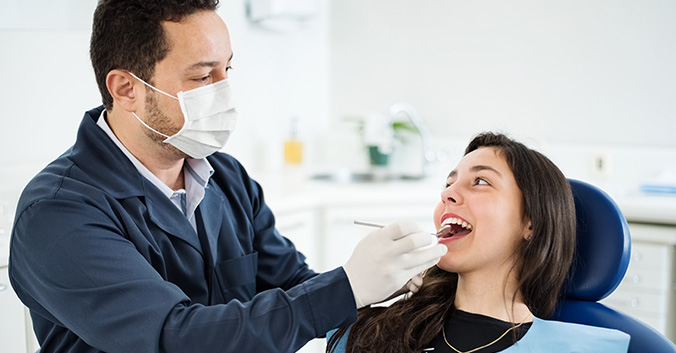
5 tips for ergonomics in the operatory from Dr. Daniel Croley
 Dr. Daniel Croley |
Before he moved to the world of dental insurance, Dr. Daniel Croley, Chief Dental Officer at Delta Dental, managed two practices in Chicago. While managing those practices he began to suffer from repetitive strain in one shoulder and this strain developed into a severe shoulder injury. After eight years of practice, he made the difficult decision to look for a new position that would leverage his knowledge without being a risk to his health.
Even with the help of specialists, the risk of permanent injury as a dental professional is high, and it’s not uncommon for dentists or hygienists to experience musculoskeletal disorders (MSDs) due to poor posture. In fact, at least 62% of dentists report having at least one complaint of pain. MSDs are also the leading cause for early retirement for dental professionals.
The good news is that you don’t need to accept pain as a part of your job. Here are Dr. Croley’s tips to reduce the risk of injury when you practice.
1. Position yourself
With packed schedules and deadlines, taking any additional time to properly position yourself may be easy to overlook. But overlooking your positioning time after time will take a toll on your body at some point. When you sit down with a patient, remember to:
- Move your stool as close as possible to your patient’s head so that you don’t overextend your arms or back.
- Keep your feet flat on the floor or the footrest of your stool.
- Adjust your stool height so your thighs slope slightly downward.
- Hold your wrists in a neutral position and minimize wrist movement.
- Maintain an erect, neutral spine instead of bending forward or leaning over your patient.
- Distribute your weight evenly in a tripod pattern, between your two feet on the floor and your stool.
2. Position the patient
The position of your patient is just as important as your own position.
- Recline the patient so your working area is at or just above your elbow level. If you can’t get an ideal position, adjust your stool height accordingly.
- Have the patient move to the very end of the headrest with no space at the top.
- Ask patients to tilt their head as needed to maintain your line of sight instead of leaning.
3. Engage your core
The goal of engaging your core is to use the muscles around your mid-section to act as a brace for your upper body and spine. Whether you’re sitting down to do a procedure or standing for long periods, that support protects the weaker muscles of your upper body from the strain it takes to lean over.
Some people interpret “engage” to mean “suck in,” which doesn’t provide your body any support. Instead of sucking in, think of the way your muscles tighten before you laugh or cough. That tightening is an engaged core.
Engaging your core muscles all day can be exhausting, especially if you’re not in the habit of doing it. Consider training your core muscles to make it easier to maintain good posture for longer.
4. Use equipment
Consider using a loupe to minimize the need to perch on the edge of your stool to see. If your overhead light is too dim or casts too many shadows, consider a head-mounted light as an alternative. Avoid gripping instruments tightly.
5. Stretch and exercise
Stretch to release strain. When possible, take 10 minutes to get up and stretch your spine, arms and legs. Stretching during and after work can help relax strained muscles.
For practice owners, investing in ergonomic training and supporting healthy practices has long-term benefits like preventing unwanted retirement, reducing canceled appointments and lessening the need for disability leave.
With very busy personal schedules and maintaining the production required to maintain a dental practice, it can be difficult to prioritize time-consuming tasks like ergonomic evaluations and training. Sometimes you just need to get into non-ideal physical positions to gain the required access. You can’t eliminate all physical strain, reducing it is still helpful. Even small changes can have a huge impact towards becoming an ergonomically healthy practice.
Recent posts
- Delta Dental is partnering with dental schools to offer exclusive CE courses
- Drive better patient experiences with benefit conversations
- Offer care beyond the chair with teledentistry
- Healthy mouths begin with hygienists
- How to educate patients and make them partners in oral health
- Dr. Justin Perdichizzi — serving those who served
- Get your patients to make (and keep) their dental appointments
- One sign-on, many advantages
- Delta Dental hosts in-person Provider Advisory Council in Arizona
- Tooth be told, we love our dentists
